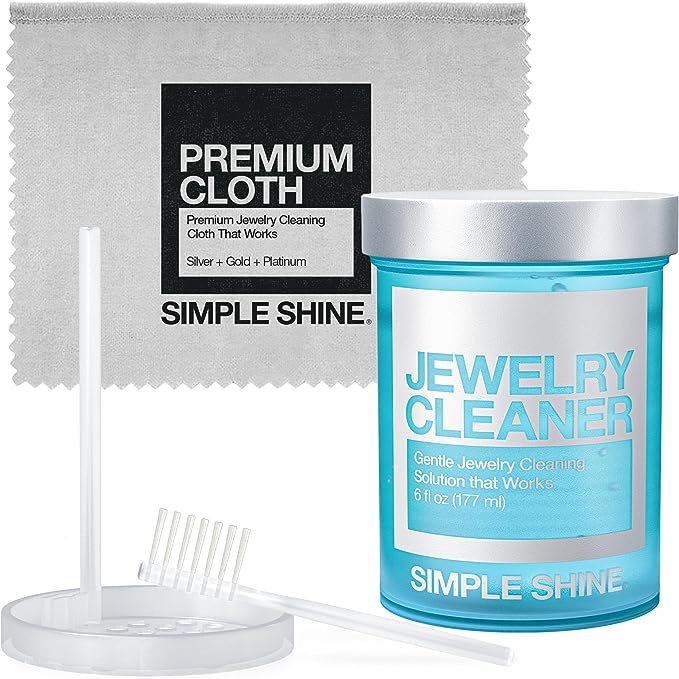Expert Tips on Choosing the Best Sandpaper for Jewelry Making
When it comes to jewelry making, achieving a smooth and polished finish is crucial. One of the essential tools for achieving this is sandpaper. Sandpaper, also known as abrasive paper, is a versatile tool that can be used to shape, smooth, and polish various materials, including metal, wood, and glass. However, with so many options available in the market, choosing the right sandpaper for jewelry making can be a daunting task. In this article, we will provide you with expert tips on how to choose the best sandpaper for your jewelry making projects.
Best Sandpaper for Jewelry

Jewelry Sandpaper

Jewelry Cleaning Kit
Product Features
Understanding Grit
Grit is one of the most important factors to consider when choosing sandpaper for jewelry making. Grit refers to the size of the abrasive particles on the sandpaper. The higher the grit number, the finer the particles and the smoother the finish. Sandpaper comes in a wide range of grit sizes, from coarse to fine. Here are some common grit sizes and their recommended uses:
- Coarse Grit (40-60): Ideal for removing heavy material, shaping, and rough sanding.
- Medium Grit (80-120): Suitable for general sanding and smoothing surfaces.
- Fine Grit (150-180): Used for fine sanding and preparing surfaces for polishing.
- Extra Fine Grit (220-400): Perfect for achieving a smooth and polished finish.
It is important to note that different materials require different grit sizes. For example, if you are working with metal, you may need a coarser grit to remove scratches and imperfections. On the other hand, if you are working with delicate gemstones, a finer grit may be more suitable to avoid damaging the surface.
Choosing the Right Material
Sandpaper is made from various materials, each with its own unique properties. The most common types of sandpaper materials used for jewelry making are:
- Silicon Carbide Sandpaper: This type of sandpaper is ideal for sanding and polishing metals, such as silver and gold. It is known for its durability and ability to produce a smooth finish.
- Aluminum Oxide Sandpaper: Aluminum oxide sandpaper is versatile and can be used on a wide range of materials, including metal, wood, and glass. It is known for its long-lasting performance and excellent cutting ability.
- Garnet Sandpaper: Garnet sandpaper is commonly used for woodworking projects. It is less aggressive than silicon carbide and aluminum oxide, making it suitable for delicate materials.
When choosing the right material, consider the type of jewelry you are making and the material you are working with. For example, if you are working with precious metals like gold or silver, silicon carbide sandpaper would be a good choice. If you are working with wood, garnet sandpaper may be more suitable.
Consider the Backing
The backing of the sandpaper plays a crucial role in its performance and durability. Sandpaper can have either a cloth or paper backing. Here are the key differences between the two:
- Cloth Backing: Sandpaper with a cloth backing is more durable and tear-resistant. It is ideal for heavy-duty sanding and shaping.
- Paper Backing: Sandpaper with a paper backing is more flexible and lightweight. It is suitable for general sanding and smoothing surfaces.
Consider the nature of your jewelry making project and choose the backing that best suits your needs. If you are working on intricate designs that require precision, paper-backed sandpaper may be more suitable. However, if you are working on larger pieces that require more aggressive sanding, cloth-backed sandpaper would be a better choice.
Wet or Dry Sandpaper
Another important consideration when choosing sandpaper for jewelry making is whether to use wet or dry sandpaper. Wet sandpaper is designed to be used with water or a lubricant, while dry sandpaper can be used without any additional substances. Here are the key differences between the two:
- Wet Sandpaper: Wet sandpaper is ideal for projects that require a high-quality finish. It helps to prevent clogging and keeps the surface cool, resulting in a smoother finish. It is commonly used for polishing metals and glass.
- Dry Sandpaper: Dry sandpaper is suitable for general sanding and shaping. It is more affordable and easier to use compared to wet sandpaper. It is commonly used for woodworking projects.
Consider the nature of your jewelry making project and the material you are working with when deciding whether to use wet or dry sandpaper. If you are working with metals or glass and aiming for a high-quality finish, wet sandpaper would be the better choice. However, if you are working with wood and need to remove material quickly, dry sandpaper may be more suitable.
Additional Considerations
Here are some additional tips to keep in mind when choosing sandpaper for jewelry making:
- Consider the size and shape of the sandpaper. Sandpaper sheets, sanding blocks, sandpaper rolls, and sandpaper discs are all available options. Choose the one that is most convenient for your project.
- Consider the type of sanding tool you will be using. Different sanding tools, such as orbital sanders, belt sanders, and drum sanders, may require specific types of sandpaper.
- Consider the grit progression. It is often recommended to start with a coarser grit and gradually move to finer grits for a smooth and polished finish.
- Consider the availability and cost of the sandpaper. Some types of sandpaper may be more readily available and affordable than others.
Conclusion
Choosing the best sandpaper for jewelry making is essential for achieving a smooth and polished finish. By considering factors such as grit, material, backing, and wet or dry sandpaper, you can select the most suitable sandpaper for your specific project. Remember to consider the type of material you are working with and the desired finish. With the right sandpaper, you can take your jewelry making skills to the next level and create stunning pieces that shine.



















